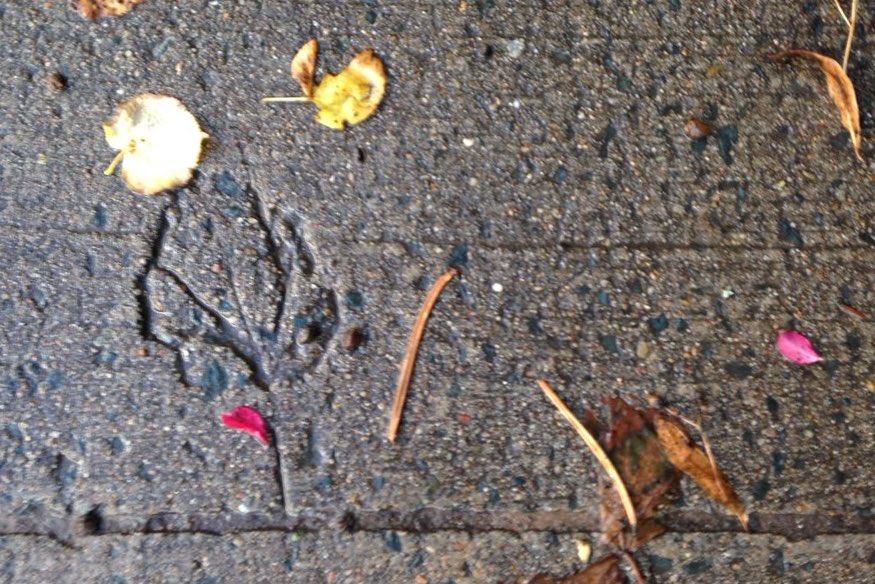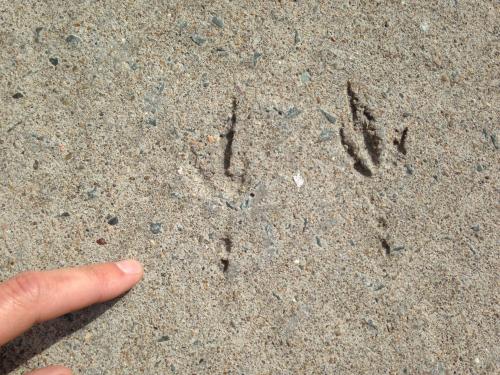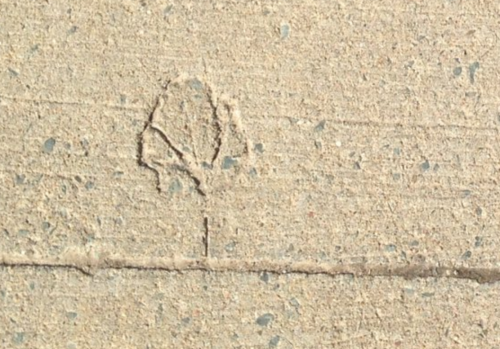Urban Geology

-----
PLEASE NOTE: At this time, people should stay within their neighbourhood and observe the Province’s minimum recommended social distancing from other people of two meters or six feet. For the latest information about the pandemic and public health recommendations, please see the Government website about Coronavirus https://novascotia.ca/coronavirus/.
-----
As we all spend more time walking the sidewalks of our neighbourhoods, enjoying the fresh air and sunshine (but social distancing by staying 2 meters apart), it is inevitable that you will see an urban fossil - like a leaf impression or bird trackway in the cement. These are traces of plants or animals that were at that location when the cement sidewalk was created, perhaps decades ago.
Urban Fossils
Sidewalks are interesting urban geology topics. The are literally the ground we walk upon, and composed of interesting geological materials. Concrete is made from limestone (calcium carbonate), sand (quartz, silicon dioxide), gravel and water. But perhaps one of the most interesting urban geology features of sidewalks is the rare occurance of urban fossils, impressions in the surface of the sidewalk caused by fallen leaves, animal tracks, and even bike tires or human footprints.

Obviously the construction workers who make sidewalks, do not like to see animals walking across the wet cement. The workers will often protect the surface with plastic or stay on guard to make sure the cement cures without becoming marked. It is rare, but sometimes things happen and there are permanent traces of plants or animals left in the sidewalk surface.
Tree leaves in particular can have very detailed impression recorded in the cement. The finest detailed leaf impressions occur because the leaf absorbes some of the water from the wet cement. Tree leaves also make chemical stains on cement that are non-permanent traces of their decomposition (Neighbourhood Nature 2009).

Animals walking across the wet cement can leave a single footprint, or a trackway of multiple footprints from one individual. With trackways you can interpret behaviour, estimate walking speed and perhaps even see evidence of changing direction.
Learning Activities
Sidewalk fossils can also be valuable learning experiences. Suggestions for learning activities include drawing, identifying leaves or track makers, and interpreting direction or changes in trackway (Fuller 2003). More suggestions will be added in the future.
Nova Scotia Urban Fossils Map
We are building an online map to document the locations of sidewalk fossils in Nova Scotia.
Click Link to access the map in a new window or Google Maps app on mobile device.
Citizen Science - Help Us
If you find a new urban fossil, please take a photogragh (include something for scale) and send it with the location details (street adress or GPS) to nsm-geo@novascotia.ca